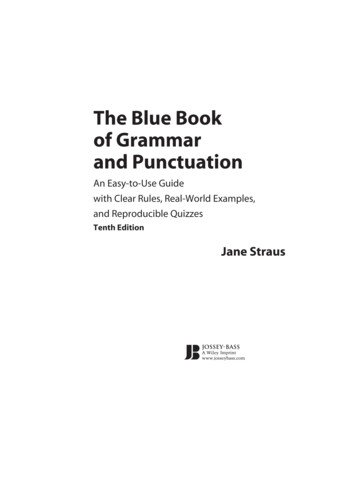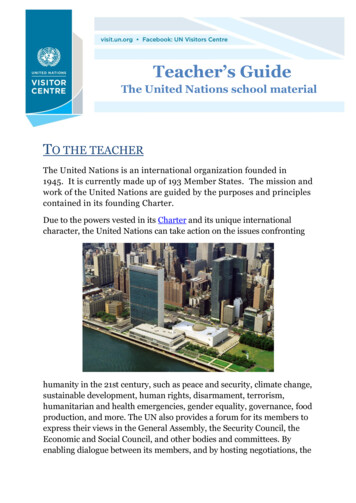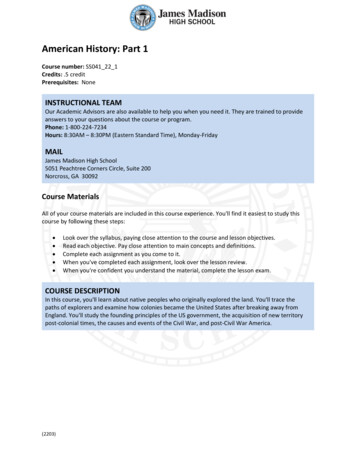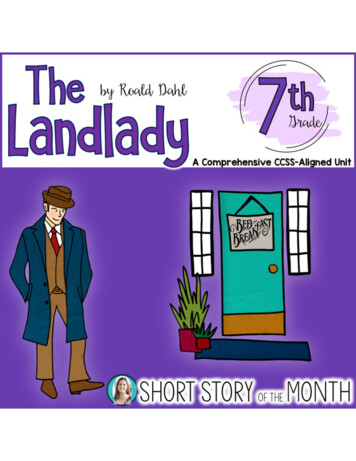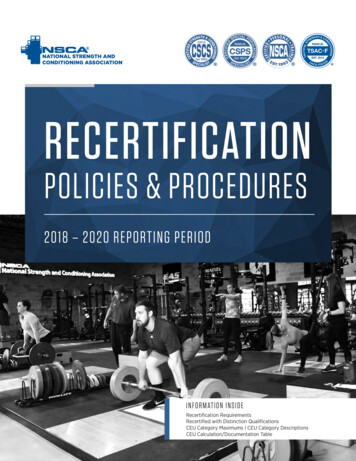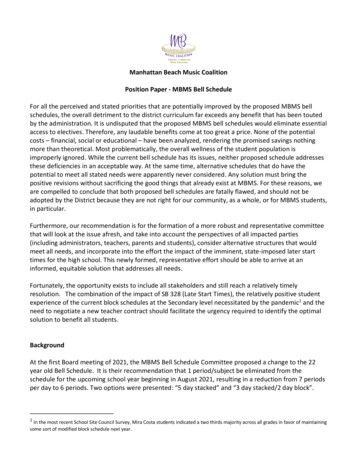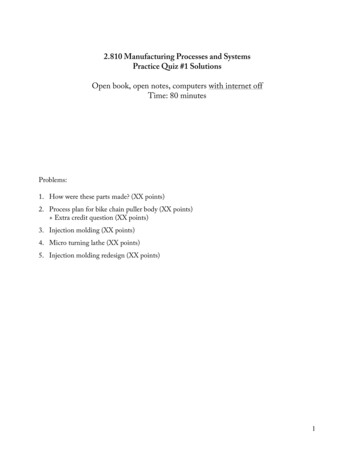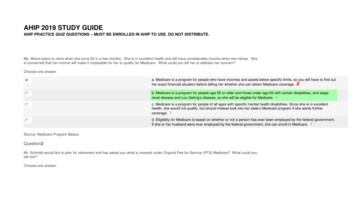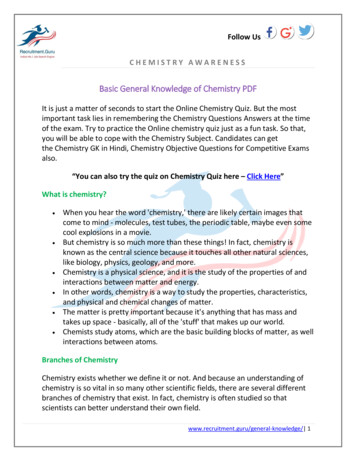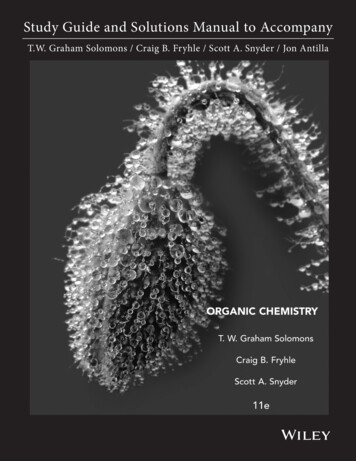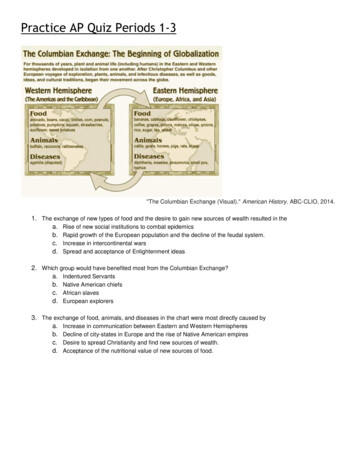
Transcription
Practice AP Quiz Periods 1-3"The Columbian Exchange (Visual)." American History. ABC-CLIO, 2014.1. The exchange of new types of food and the desire to gain new sources of wealth resulted in thea. Rise of new social institutions to combat epidemicsb. Rapid growth of the European population and the decline of the feudal system.c. Increase in intercontinental warsd. Spread and acceptance of Enlightenment ideas2. Which group would have benefited most from the Columbian Exchange?a. Indentured Servantsb. Native American chiefsc. African slavesd. European explorers3. The exchange of food, animals, and diseases in the chart were most directly caused bya. Increase in communication between Eastern and Western Hemispheresb. Decline of city-states in Europe and the rise of Native American empiresc. Desire to spread Christianity and find new sources of wealth.d. Acceptance of the nutritional value of new sources of food.
Ancient Painting of Centeotl, the Aztec deity for maize4. The painting above shows the importance of maize in Aztec society and religion. Prior to its introduction, how didthe absence of agriculture affect Native American societies?a) increased migration due to hunting and gatheringb) the development of permanent villagesc) social institutions were developed fasterd) increased trade and emphasis on agriculture5. Which of the following would be the most likely result of maize cultivation in Native American societies?a) mobile lifestylesb) hunter-gatherer economiesc) social diversificationd) increased foraging6. The exchange of Native American maize for European wheat is most accurately described by what majorhistorical development?a. The growth of Mercantilism in the 13 coloniesb. the idea of Salutary Neglect by the British in the New Worldc. the implementation of the Encomienda system by the Spanishd. the early stages of the Columbian Exchange
Questions 7-9 refer to the excerpt below:“Their reason for killing and destroying such an infinite number of souls is that the Christians have an ultimate aim, whichis to acquire gold, and to swell themselves with riches in a very brief time and thus rise to a high estate disproportionate totheir merits. It should be kept in mind that their insatiable greed and ambition, the greatest ever seen in the world, is thecause of their villainies. And also, those lands are so rich and felicitous, the native peoples so meek and patient, so easyto subject, that our Spaniards have no more consideration for them than beasts.- “The Devastation of the Indies: A Brief Account,”Bartolome de Las Casas, Spanish missionary, 15527. De Las Casas’ account suggests Spain’s main focus in colonization was:a. Financial enrichment;b. Religious conversions to the Catholic faith;c. Competition for territory with other European nations;d. Religious competition against the Protestants;8. Despite de las Casas’ criticism(s), ultimately the Spanish implemented which of the following systems to controlthe Native American population(s) in the New World:a. The Black Legend;b. Encomienda;c. Intermarriage;d. Mercantilism;9. Which of the following represents an example of a later, successful Native American revolt against Spanish rule?a. the 1764 Paxton Boys’ Revolt in Pennsylvania;b. New Mexico’s Pope’s Rebellion (1680)c. South Carolina’s Stono Rebellion (1739);d. New England’s King Philip’s (Metacom’s) War (1675);
“ . . . [I]n order that they would be friendly to us—because I recognized that they were people who would be better freedand converted to our Holy Faith by love than by force—to some of them I gave red caps, and glass beads which they puton their chests, and many other things of small value, in which they took so much pleasure and became so much ourfriends that it was a marvel. . . . . They should be good and intelligent servants, for I see that they say very quicklyeverything that is said to them; and I believe they would become Christians very easily, for it seemed to me that they hadno religion.”-The Diary of Christopher Columbus (Thursday, Oct. 11, 1492)This is wisdom and justice on the part of the Great Spirit to create and raise chiefs, give and establish unchangeable laws,rules and customs between the Five Nation Indians, the Mohawks, Oneidas, Onandagas, Cayugas and Senecas and theother nations of Indians here in North America. The object of these laws is to establish peace between the numerousnations of Indians, hostility will be done away with, for the preservation and protection of life, property and liberty.- Iroquois Federation Constitution (credited to Hiawatha)10. Which of the following observations of Native Americans by Columbus is best supported by the Iroquoisconstitution?a. that they were friendly and peace-lovingb. that they could be easily converted to Christianityc. that they would be good and intelligent servantsd. that they had no religion11. Which of the following assertions in the Iroquois constitution best agrees with the observations of Columbus?a. that they recognized the Great Spirit as the source of their rules and customsb. that the various groups of Indians sought to live together in peacec. that the Indians had an established code of lawsd. that the Indians valued life, property, and liberty12. The Iroquois were more successful in resisting European conquest than were the native Americans encounteredby Columbus due largely to what advantage?a. They were more unified.b. They had more resistance to European diseases.c. They were more warlike.d. They were more prosperous.
“The main goal of divine Providence in allowing the discovery of these tribes and lands . is . the conversion and wellbeing of souls, and to this goal everything temporal must necessarily be subordinated and directed.”“They [the Spaniards] spared no one, erecting especially wide gibbets on which they could string their victims up with theirfeet just off the ground and then burn them alive thirteen at a time, in honor of our Savior and the twelve Apostles, or tiedry straw to their bodies and set fire to it The way they normally dealt with the native leaders and nobles was to tie themto a kind of griddle consisting of sticks resting on pitchforks driven into the ground and then grill them over a slow fire, withthe result that they howled in agony and despair as they died a lingering death.”Bartolomé de Las Casas13. Which of the following events is most directly tied to the critique of European atrocities given here by de lasCasas?a.b.c.d.De las Casas’ suggestion that Africans be used as slaves in the New World.De las Casas’ suggestion that Native Americans be used as slaves in the New World.Cortes’ invasion of the Aztec EmpirePizarro’s invasion of the Incas14. De las Casas is concerned that the inevitable consequence of European atrocities isa. The enslavement of Native Americansb. The rejection of Christianity among the Native Americansc. War in the New Worldd. Retaliation via an invasion of Europe by Native Americans15. The main motive Europeans had in committing these atrocities wasa. Extracting information about rumors of gold in the New Worldb. Humoring themselves by witnessing the sufferings of the indigenous populationc. Gaining a work force to relieve the burdens accompanying manual labord. Demonstrating their superiority over the indigenous peoples of the New World
Text: “The Indians cultivate the earth with diligence. They have learnt to make hoes with fish bones and to fit them withwooden handles. With these they can dig the soil quite easily as it is not heavy. Once the earth has been well broken upand leveled, the women sow beans or millet or maize. To do this they are helped by people who precede them with astick, and make holes in the soil where the grain or bean or millet is thrown. The sowing completed, they leave the fieldalone. It is, in fact, then their winter season which is quite cold in this region and which lasts three months, from 24December to 15 March. Being always naked, the Indians then seek shelter in the forests. The winter over, they return totheir houses, anticipating the ripening of the crops. The harvest gathered, they store the maize for the year's uses, and donot trade with any of it except perhaps for some exchange of household articles.”16. The Timuca Indians in this picture are probably planting:a. Riceb. Cornc. Orangesd. Mestizos17. This simple picture is an illustration of what kind of relationship between the sexes in the New World?a. The superiority of men over womenb. The superiority of women over menc. Equality between the sexesd. Immodesty among the sexes18. In what part of the world is this kind of event taking place?a. S. Americab. Central Americac. Yucatand. N. America
“Smallpox was an especially ghastly and highly contagious disease in the ‘New World.’ In central Mexicoalone, some 8 million people, perhaps a third of the entire Indian population, died of smallpox within a decadeof the arrival of the Spanish. In colonial North America, as Indians died by the tens of thousands, diseasebecame the most powerful weapon of the European invaders. A Spanish explorer noted that half the Indiansdied from smallpox and ‘blamed us’. Many Europeans, however, interpreted such epidemics as diseases sentby God to punish those who resisted conversion to Christianity.”- George Tindall and David Shi, America: A Narrative History, 2013.“Overall, the death of perhaps 80 million people-close to one-fifth of humankind-in the first century and a halfafter contact with Europeans represents the greatest loss of life in human history. It was disease as much asmilitary prowess and more advanced technology that enabled Europeans to conquer the Americas.”- Eric Foner, Give Me Liberty: An American History, 2013.19. Which of the following statements would most directly support Tindall and Shi’s argument as well asFoner’s argument concerning the demise of the Indian population?a. European diseases were the primary reason for the decimation of the Indian population.b. European military superiority was the primary cause of the decline of the Indian population.c. European technological prowess was the primary reason for the deaths of large numbers ofIndians.d. European destruction of Native American plant and animal life was the primary cause for thereduction in Indian populations.20. The passages above best serve as evidence of which of the following?a. Growing conflict between the Spanish and Indiansb. Efforts by Indians to resist Spanish colonizationc. Creation of a racially-mixed social system among Spanish settlers and Indiansd. European initiation of wide spread deadly epidemics
“The Acomas must abandon at once the fortified place in which they lie and move down into the valley,where the ministers of the holy gospel who were sent to these kingdoms and provinces by his majestyfor this purpose may be able to teach them more easily the matters of our holy Catholic faith.”- Don Juan de Oñate, 159921. The passage above reflects the European belief thata. Indians must be converted to Chrisitanity.b. Indians must be contained for military purposes.c. Indians must be taught to cultivate their lands.d. Indians must be allowed to maintain their own governmental structures.22. The passage above best illustratesa. The Protestant Reformation.b. The Catholic Reformation.c. The period of exploration.d. The Enlightenment.23. The passage demonstrates the Spanish desire for exploration in order toa. Find gold.b. Glorify the Spanish Empire.c. Glorify the Spanish Monarchy.d. Convert people to Christianity.
Their javelins are shafts without iron and some of them have at the end a fish tooth. All of them alikeare of good-sized stature and carry themselves well. I saw some who had marks of wounds on theirbodies and I made signs to them asking what they were; and they showed me how people from otherislands nearby came there and tried to take them, and how they defended themselves; and I believedand believe that -- they come here from tierrafirme to take them captive. They should be good andintelligent servants, for I see that they say very quickly everything that is said to them; and I believe thatthey would become Christians very easily, for it seemed to me that they had no religion. Our Lordpleasing, at the time of my departure I will take six of them from here to Your Highnesses in order thatthey may learn to speak.Christopher Columbus, Journal (1492)24. Columbus’ reference to ‘nearby’ people who came to take natives ‘captive’ can be best used as a(n)a. Justification of the practice of slavery and the implementation of the encomienda systemb. Indication that native populations had developed a variety of social structures.c. Reason for the Spanish to implement technological improvements in their society.d. Reason to introduce new agriculture to the areas in desperate need of superior nutrition.25. Which of the following would be most likely to refute the point of view expressed by Columbus inreference to Christianizing natives.e. Bartolome de Las Casasf. Hernan Cortezg. Amerigo Vespuccih. Francisco Pizzaro
Illustration A – Engraving by F Bartolozzi – Columbus Landing in Cubain New Spain - Circa 1540-1585Illustration B – From the Florentine Codex: General History of the Things26. Illustration A foreshadows the conditions created in illustration B by suggesting thata. Racially mixed populations emerged in the Americas.b. The Columbian Exchange initiated the depletion of Native populations.c. Populations of Native American shifted towards agriculture.d. The growth of mercantile empires stretched across the Atlantic.27. What do the postures, positions, and expressions of the subjects depicted in the engraving most likelysuggest about the artists’ point of view of the natives that encountered Columbus in Cuba (IllustrationA)?a. They feared and rejected Columbus’ arrival.b. They had a strong desire to teach Columbus about their religion.c. They wanted Columbus to teach them about agricultural cultivation.d. They revered him and assumed he was otherworldly.
“The Execution of the Inca,” Courtesy of the Library of Congress, LC-USZ62-10435528. Based on the image, what conclusions can be drawn about the interactions between Native Americans andearly Europeans?a. Catholic missionaries found that the Native populations readily accepted their new faith.b. Spanish explorers recognized the value of Native peoples to the formation of a Spanish empire in theNew World.c. Military strength and technology gave the Spanish no advantage over Native American societies.d. The conquistadors routinely used harsh treatment to subjugate Native American societies.29. How was the initial optimism that motivated Spanish expansion met with disappointment in the New World?a. The Native populations proved stronger and more resistant to Spanish conquest than expected.b. The scourge of disease that swept away large quantities of Native peoples prevented a strong alliancewith the Spanish.c. The promise of gold was never fully realized.d. Attempts to Christianize Native Americans were tempered by the appeal of Native religions to theSpanish settlers.30. How did the Spanish expansion into the Western Hemisphere differ from French and English expansion?a. A primary motivation for settlement was the conversion of Native populations to Christianity.b. Mercantilist policies placed increased emphasis on Spanish desire for the raw materials from the NewWorld.
c. The Spanish conquest led to the emergence of a caste system defined by an intermixture amongEuropean settlers, Africans, and Native Americans.d. By destroying indigenous groups, the Spanish opened up expansive territory to develop free of NativeAmerican interactions.
“America was discovered.and the Year ensuing inhabited by the Spaniards, and afterward a multitudeof them travelled thither from Spain.[Natives of America] are by the Creation of God innocently simple, altogether void of and averse to allmanner of Craft, Subtlety and Malice tractable, and capable of Morality or Goodness, very apt toreceive the instilled principles of Catholic Religion .The Spaniards first assaulted the innocent Sheep, so qualified by the Almighty, as is premention'd,like most cruel Tygers, Wolves and Lions hunger-starved.they have so inhumanely and barbarouslybutcher'd and harass'd with several kinds of Torments.”-Bartolome de las Casas, A True History of the Indies (1552)“[Native Americans] themselves boast of their public institutions, for they have cities constructed in anorderly fashion, and kings.they deceive themselves.for in these same institutions I see proof on thecontrary of the rudeness, the barbarism, and the inherently slavish nature of these people .[Also] theirimpious religion and of the wicked sacrifices in which they worshiped the devil as their God, believingthat they could offer no better tribute than human hearts .How can we doubt that these peoples, so uncivilized , so barbarous, contaminated with so manyinfidelities and vices, have been justly conquered by such an excellent, pious, and just king as the lateFerdinand the Catholic and by a nation that is most humane and excels in every kind of virtue?”-Juan De Sepulveda, On The Nature of the Natives (1550)31. Which of the following later developments best reflects the later influence of arguments and ideas likeSepulveda’s?a. The establishment of both native slavery and encomienda systems of labor and governance.b. The extensive use of Native slave labor in French colonial areas.c. The emergence of a racially mixed society in Spanish colonial areas.d. The extensive use of African slave labor in later colonial societies.32. Which of the following later groups expressed ideas most similar to those in de las Casa’s writings?a. Early 1890s Populist leaders.b. Late 1960s activist writers and leaders.c. Early 1920s Progressives.d. Early 1790s Federalists.33. Which of the following events or trends was most directly caused by the dialogue and policies indicatedin both passages?a. The Pueblo revolt and the Spanish accomodationist responses.b. The increased lethality and frequency of intertribal warfare west of the Appalachian Mountainsin the 1700s.c. The rapid growth of an “Atlantic economy” in the 1600s focused around commodity andpopulation interchanges.d. The repeated confrontations among European powers in the 17th and early 18th century overcontrol of Atlantic trade routes and colonial possessions.34. Both writers reflect which of the following larger contemporaneous contrasts between Spanishcolonization and other empires?a. Spanish colonizers placed much greater emphasis on Christianity and religious difference thanother colonial powers.
b. Spanish colonizers came into much more intense and frequent armed conflict with NativeAmerican groups than the Dutch.c. Spanish colonies attempted to maintain closer control and extract greater levels of income fromtheir colonies than other colonial powers.d. Spanish colonizers achieved less success at transplanting religion, social values, and politicalinstitutions to the Americas than the English.
European Illustrations of Vespucci’s Letter to Pietro Soderini (1509)35.Which of the following resulted from the publication of early European explorers’ experiences in theNew World?a.European adoption of informal dress and conductb.The development of ideas of European racial superiorityc.The promotion of intermarriage between European Christians and Africansd.The desire to limit invasive species and pathogens from entering Europe36.Which is most different from the above depiction of the Spanish explorer’s interaction with the natives?a.Jesuit conversion of Native Americans in New Franceb.The Pueblo revolt in Santa Fec.Indentured servitude in British North Americad.The development of the encomienda system in Spanish America37.Which of the following would best support the assertion that native Indian groups were more likely tolive in permanent settlement in southern regions than northern ones prior to contact with Europeans?a.The prevalence of maize cultivation in Central America and in the American Southwest.b.The existence of Moundbuilding societies in North America.c.Native groups along the Atlantic Seaboard developed hunter-gather economies.d.The Columbian Exchange made permanent settlement by native possible.
Map by Robert PromAdapted from maps in Philip D. Curtin, The Atlantic Slave Trade: A Census (Madison, WI: University ofWisconsin Press, 1969)38. Which of the statements is most directly supported by the maps above?A. The Atlantic slave trade led to a gender imbalance in Western Africa as European slave traderspreferred female slaves.B. Because Europeans colonized North America later than Latin America, North American settlersavoided cash crop farming and thus imported fewer slaves.C. Because natives died at great numbers from diseases brought by the Europeans, Indian laborwas gradually replaced by African slavery.D. Because slaves died at higher rates in North America than Latin America, plantation ownersthere eventually relied on European indentured servants.39. Which of the following was a significant effect of the large number of slaves brought from Africa to theAmericas during the sixteenth through eighteenth centuries?A. Many Europeans developed a belief in white superiority to justify their subjugation of Africanseven as the Enlightenment proposed new ideas of equality.B. European countries passed laws prohibiting the importation of African slaves into Europe inorder to ensure that American plantation owners had an adequate supply.C. Europeans conquered most of Africa in order to completely control the African slave trade andavoid African middlemen.
D. Natives in regions, where the largest numbers of slaves were imported, adopted slavery in orderto compete with Europeans.40. Which of the following pieces of evidence best supports the data presented in the maps?A. The regions with the largest populations of slaves became the first colonies to develop activeabolitionists societies.B. Slaves were best able to preserve elements of African culture in the regions with the largestpopulations of slaves.C. Because Brazil was the most wealthy colony, European powers continued to fight each other forcontrol until the early eighteenth century.D. During the sixteenth and seventeenth centuries, most European settlers settled in Brazil tobegin sugar plantations.
And, whenever any of the said States shall have sixty thousand free inhabitants therein, such State shall be admitted, byits delegates, into the Congress of the United States, on an equal footing with the original States in all respects whatever,and shall be at liberty to form a permanent constitution and State government:There shall be neither slavery nor involuntary servitude in the said territory, otherwise than in the punishment of crimeswhereof the party shall have been duly convicted: Provided, always, That any person escaping into the same, from whomlabor or service is lawfully claimed in any one of the original States, such fugitive may be lawfully reclaimed and conveyedto the person claiming his or her labor or service as aforesaid.- Land Ordinance of 178741. Which particular section of the United States did this excerpt most apply to? [3.3.II.A] POL1a. The Southern Statesb. The New England Statesc. The Northwest Territoryd. The Mid-Atlantic States42. What trend that began with the ending of the American Revolution is demonstrated in this excerpt?a. The removal of the land requirement in voting.b. The beginning of the outlawing of slavery in the Northern States.c. The beginnings of the abolitionist movement.d. The driving of Spanish settlers off of their land.43. What future event could be an effect of the creation of this document? 3.3.II.Aa. The Treaty of Greenville, which displaced Native American from the Ohio regionb. The Louisiana Purchase, which doubled the size of the United Statesc. The birth of the first two political parties, the Federalists and Democratic Republicansd. Washington’s Farewell Address, warning against entangling alliances
44. Access to what transportation source was a concern of farmers living in Western Tennessee and Kentucky during this period?a. Roads across the Appalachian Mountainsb. The Ohio Riverc. The Mississippi Riverd. The Great Lakes45. In what part of the United States were British soldiers occupying forts, causing problems for American westward migration?a. Southern Georgiab. Northwest Territoryc. Western Tennesseed. Western Virginia46. What event is NOT a direct result of the conditions displayed in the map?a. Major land purchases enacted by American Presidentsb. Conflicts over the usage of the Mississippi Riverc. The Adams-Onis Treatyd. The deterioration of relations between the United States and France following the Revolutionary War--------------------------------
That the said colonies and plantations in America have been, are, and of right ought to be. subordinate unto, anddependent upon the imperial crown and parliament of Great Britain; and that the King's majesty, by and with the adviceand consent of the lords spiritual and temporal, and commons of Great Britain, in parliament assembled, had, hash, andof right ought to have, full power and authority to make laws and statutes of sufficient force and validity to bind thecolonies and people of America, subjects of the crown of Great Britain, in all cases whatsoever.-Declaratory Act 176647. What conditions in the colonies caused the need for the creation of this document?a. Colonial challenge to British parliamentary authorityb. British policy of salutary neglect.c. The increase in formalized communication between many of the coloniesd. The writing of the Declaration of Independence48. What argument would American colonists make in opposition to the British policy depicted in the document?a. The American colonies are too economically valuable to be denied representationb. The American colonies are not directly represented in Parliament.c. The British are not protecting the colonies from Native American attacks.d. The actions of the Sons of Liberty do not reflect the beliefs of the majority of the colonial population.49. In which part of the colonies would the majority of American colonists be least likely to agree with the British policyexpressed in the document?a. The New England coloniesb. The Middle Coloniesc. The Southern Coloniesd. The Trans-Appalachian frontier
Benjamin Franklin - Pennsylvania Gazette - May 9, 175450. This cartoon was originally intended toa.Encourage participation in colonial protests against British taxationb. Promote a greater measure of colonial home rule as embodied in the Albany Plan of Unionc. Foster the development of Committees of Correspondence during the revolutionary periodd. Encourage the formation of an inter-colonial military force to combat Native Americans on the frontier51. This cartoon most directly reflects thea. Increasing level of colonial autonomy under the policy of Salutary Neglectb. Attempts by Native American tribes to divide the loyalties of the colonistsc. Real and perceived threats to colonial unity during the French and Indian Ward. British government’s effort to unify the colonies for the pursuit mercantilist economic aims52. Which of the following represents a future example of the struggles highlighted in the cartoon? (3.1 II C - POL)a. Existence of substantial number of loyalists in the coloniesb. Lack of colonial representation in the Second Continental Congressc. Widespread participation in colonial boycotts of British exportsd. Lack of state representation at the 1786 Annapolis Conference
“The Bostonians Paying the Excise-man: Or Tarring and Feathering,” Philip Dawe [?], 177453. This political cartoon demonstrates [3.1 II A; POL]a. Colonial dissatisfaction with British mercantilist economic policiesb. Widespread violent resistance to British authority throughout the coloniesc. British oppression of colonial political dissentersd. Tensions between wealthy coastal merchants and backcountry farmers54. Supporters of the actions of those represented in the image would agree with which of the followingstatements: [3.1 II A; POL, WOR]a. Parliament is well within their rights to impose new, necessary taxes to provide for colonialdefense.b. Colonial gentry possessed an unfair monopoly on colonial tradec. British economic policies placed unnecessary and unjust constraints upon the colonialeconomy.d. Colonial smuggling was directly responsible for British reactionary policies55. What event from the Federalist Period (1789-1800) most reflects the sentiments of the peoplerepresented in the image? [3.1 II A; 3.2 II D; POL]a. The creation of a trade treaty with Great Britainb. The federal enforcement of a national excise tax on whiskeyc. The establishment of the First National Bankd. The appointment of Federalists to the judicial branch on the eve of Jefferson’s presidency
“That this Assembly doth explicitly and peremptorily declare, that it views the powers of the federalgovernment, as resulting from the compact, to which the states are parties; as limited by the plainsense and intention of the instrument constituting the compact; as no further valid that they areauthorized by the grants enumerated in that compact ”–Virginia Resolution (1798)“ since the discretion of those who administer the government, and not the constitution, would be themeasure of their powers: That the several states who formed that instrument, being sovereign andindependent, have the unquestionable right to judge of its infraction; and that a nullification, by thosesovereignties, of all unauthorized acts done under color of that instrument, is the rightful remedy ”Kentucky Resolution (1799)56. The ideas represented in the excerpts above were a direct response to which of the following? [3.2 II D;POL]a. Con
The exchange of new types of food and the desire to gain new sources of wealth resulted in the a. Rise of new social institutions to combat epidemics b. Rapid growth of the European population and the decline of the feudal system. c. Increase in intercontinental wars d. Spread and acceptance of Enlightenment ideas 2.
